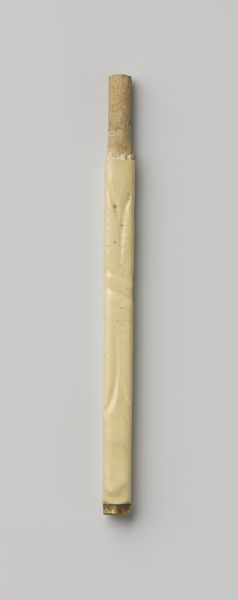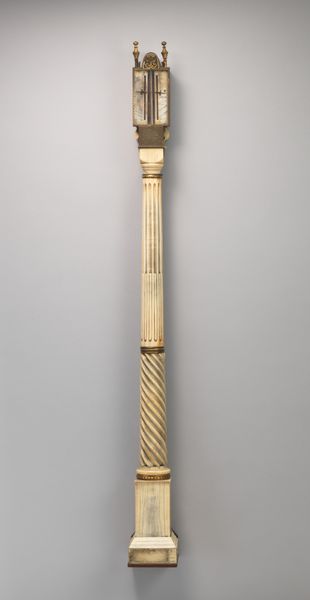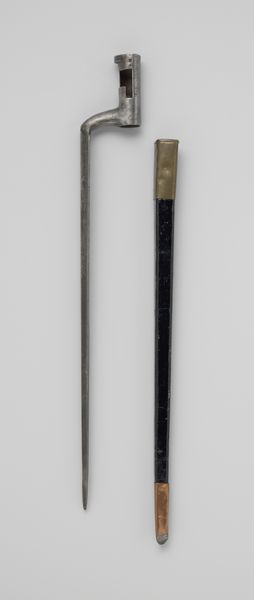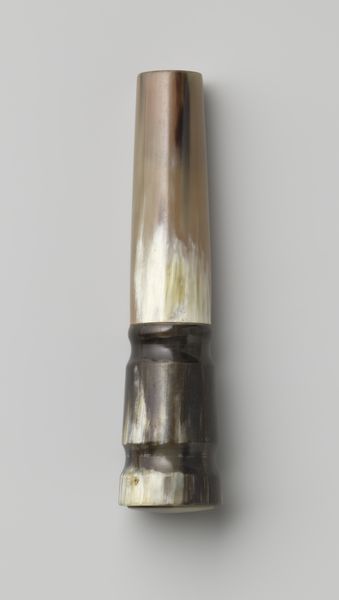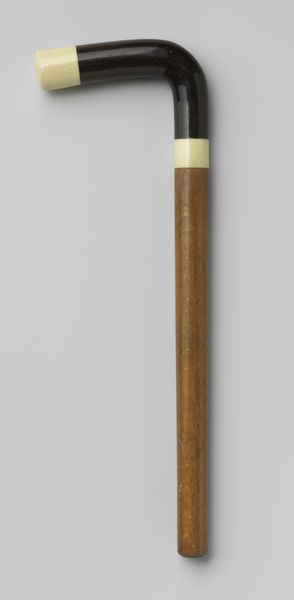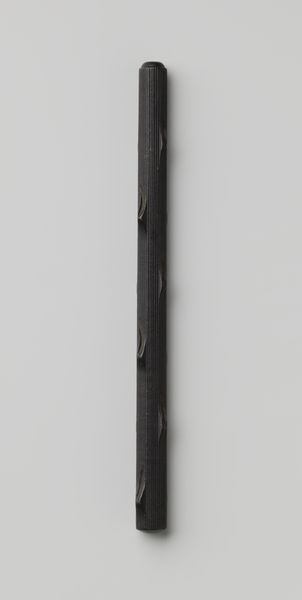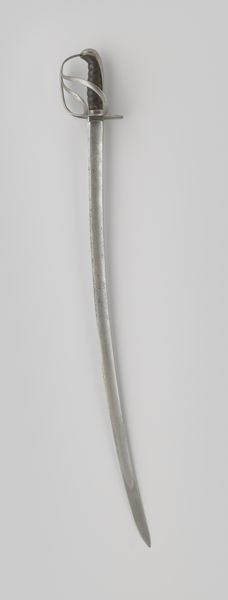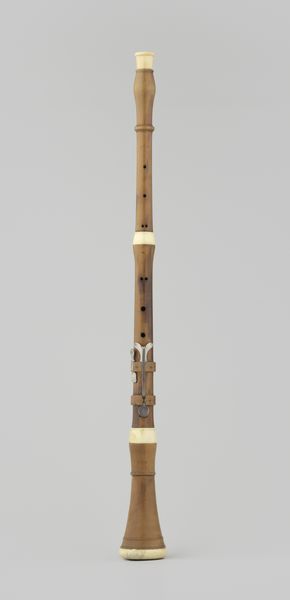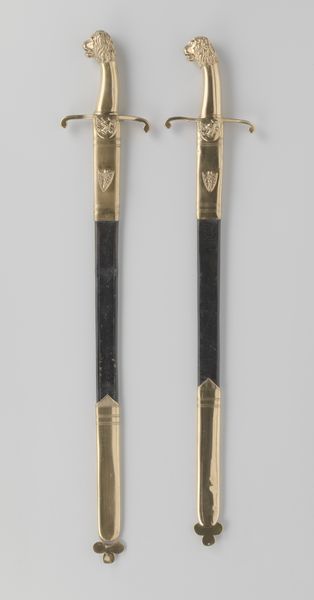
Met been bekleed handvat voor een paraplu of parasol; met een vergulde ronde knop c. 1910 - 1920
0:00
0:00
metal, ivory
#
product shot
#
clear graphic shape
#
circular oval feature
#
art-nouveau
#
3d printed part
#
metal
#
virtual 3d design
#
round design
#
product design photgrpaphy
#
3d shape
#
white focal point
#
product mock up
#
decorative-art
#
ivory
Dimensions: length 20.5 cm, diameter 1.7 cm, length 14.5 cm, length 6 cm
Copyright: Rijks Museum: Open Domain
Curator: Here we have an object simply listed as "Met been bekleed handvat voor een paraplu of parasol; met een vergulde ronde knop" or "Bone-covered handle for an umbrella or parasol; with a gilded round button" dating from around 1910 to 1920. It’s currently part of the Rijksmuseum collection. Editor: My immediate reaction is one of curious luxury. There’s something undeniably decadent about such adornment on a practical object, but it also makes me question what accessibility to luxury goods actually meant during that period and how labor was exploited in the processes of attaining raw materials like bone and ivory. Curator: Indeed, such embellishment speaks volumes about the social context of its creation. The use of bone, especially when shaped in such a refined manner, carries strong symbolic weight; traditionally it might evoke notions of permanence, ancestry, even protection. I’m drawn to consider what the bearer may have felt wielding such an object, beyond mere utility. Editor: The period aligns with heightened imperial exploitation, the violent disruption of both human communities and ecosystems, a narrative inextricably tied to luxury items fashioned with precious materials. Is it ethical to display such pieces without critically addressing their origins and implications? Curator: A valid point. The object stands not merely as a testament to craftsmanship but as a repository of cultural memory—the beliefs, desires, and social structures that shaped its creation and use. In this case the memory is one of both artistic skill, as well as ethical questions of empire. How are we to disentangle beauty from such fraught origins? Editor: By ensuring the museum space provides platforms to re-evaluate this aesthetic through conversations about labor, commodification and representation, perhaps creating dedicated exhibits about contested luxury. What about you, though? As someone who finds beauty in symbology, do you see some significance in the button shape? Curator: The sphere can suggest completeness, perfection, an unending cycle. Considering this handle was likely clutched during strolls—times often associated with leisurely self-reflection or even quiet social resistance via mere presence—the image of cyclical existence takes on a poignant quality. Even this small ornament invites layers of meaning, challenging us. Editor: Challenging us, yes. And the dialogue helps us unpack a deeper cultural history than if we only marveled at gilded finery, devoid of context. Curator: I agree. We see how a simple accessory can be a window into complex intersections of identity, status, and artistic ingenuity, laden with material culture implications.
Comments
No comments
Be the first to comment and join the conversation on the ultimate creative platform.
